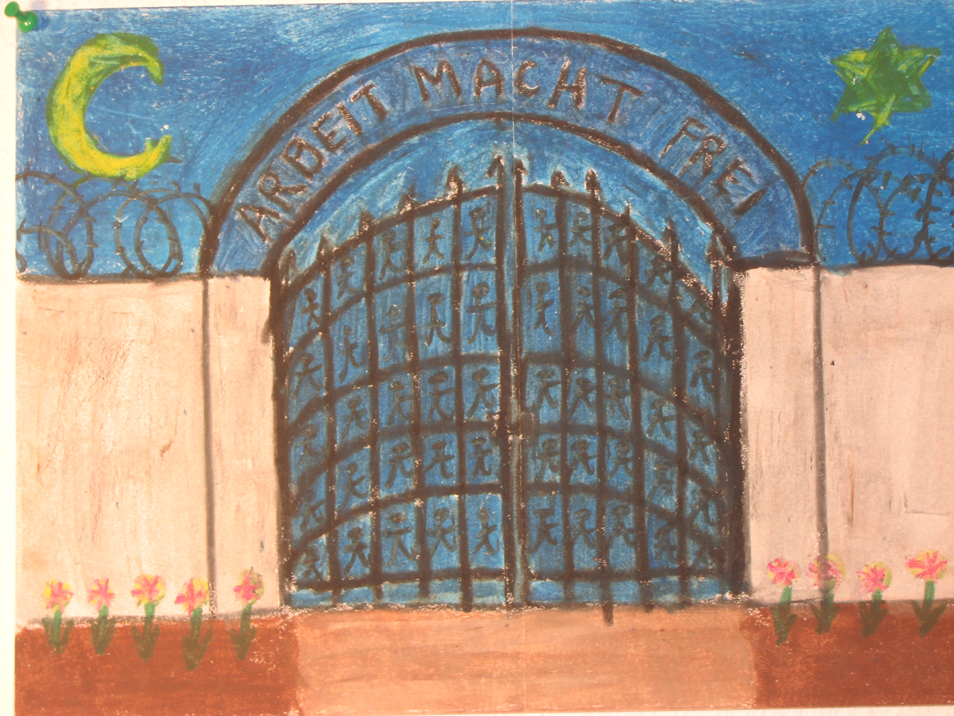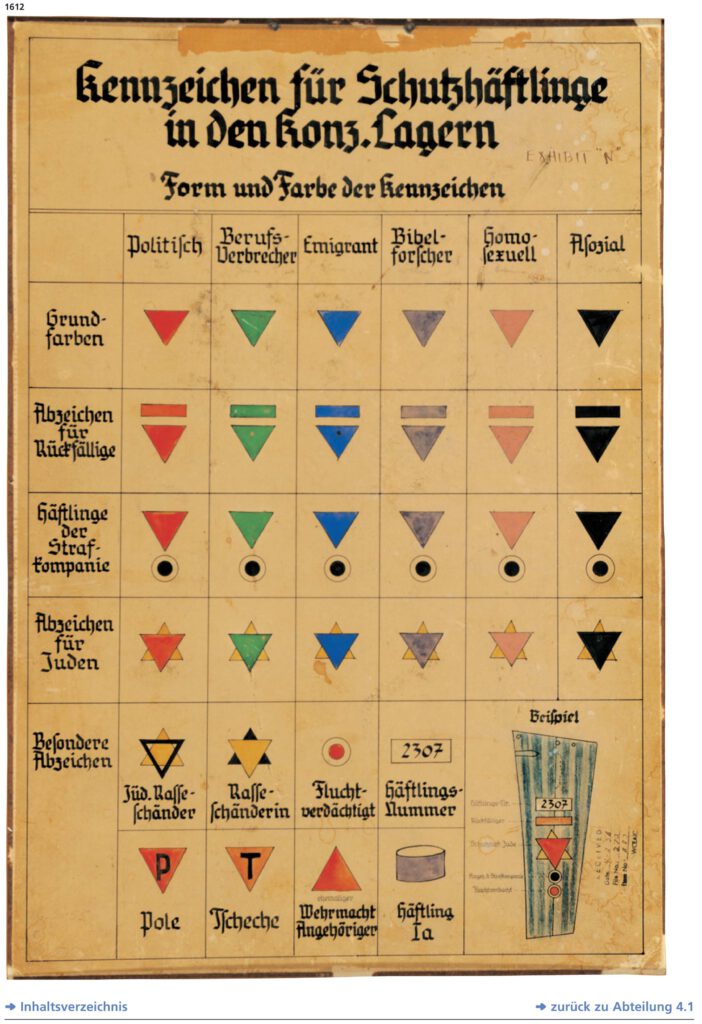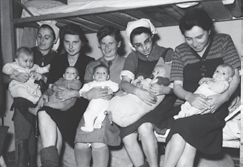My Inner Experience

I had had several Holotropic Breathwork sessions in which a concentration camp was an important element and the Dachau camp in particular. I had clues that Leipzig was involved and that in this part the twins were Polish and that the boy spent years in Dachau and was there at its liberation. I had struggled to accept this information for years before I even thought of preparing the story for publication or doing research. It had made more sense to my logical mind that they should be Jewish and I could also not understand how the boy could have spent years in a concentration camp, for at that time all I knew about from reading English-language accounts of those years were the extermination camps such as Auschwitz.
Learning about the Dachau Concentration Camp
I began my research for this part of the book by spending two weeks in November 2007 in the town of Dachau, located just outside Munich, in Germany, at the Dachau Concentration Camp Memorial. The Memorial incorporates the main buildings and perimeter walls of the original concentration camp plus example barracks buildings. The Memorial operates as a historical site and museum and has an excellent archive of documents, including many hand-written and typed prisoner manuscripts that have not been published and are available nowhere else. (Luckily by this point in my life I could read and understand German.) There are also posters and photographs and movies from that time period.
After the first week of research it became much clearer what direction my story would take. I began to understand some aspects of my experiences in the Holotropic Breathwork sessions that I had not previously understood. Dachau – the very first NAZI concentration camp, established in 1933 – was not an extermination camp, but rather a work camp, and the center of a large network of work camps. Many thousands died from “death by work” in Dachau. Thousands more died through disease, exposure, brutality, and starvation. But thousands lived since they were involved in forced labor, including skilled labor for the armaments industry that was absolutely critical for the German state in their war effort, as the character Kramer explains in the book. The large Polish population of the camp, and the large number of priests, came as additional surprises.
After my research at the archive, the story unfolded out of the material from my sessions, supported and molded by the historical record. One problem I had writing was that in the sessions the feeling of the main character at the time of the liberation of the camp was guilt, not freedom. There was a sense of having made the wrong choice. I could not understand this – it was more than the usual guilt of survivors when others have died, such as soldiers often experience after a war when comrades have died. Then I discovered Praezifix, which was a real company staffed by prisoners that operated inside Dachau approximately as I describe. Now the feelings of guilt could be explained – Alex had helped the German’s fight the war; he had not been an innocent victim.
This triggered a lot in my own personal process, as I chose to go into the US Army in 1969 during the Vietnam war instead of protesting by refusing or leaving the country, despite my opposition to the war. And even after the war I continued to be involved in the American military and government helping improve communications systems. So the story came back full circle to be about me and my choices, and not only about others and events long ago.
Dachau Camp References
For those interested in more details, the book Das war Dachau (That was Dachau), by Stanislav Zámecnik, published by the International Committee for Dachau in 2002, updated and republished in 2007, available in German or French (448 pages!), is an extraordinary document and served as the bible for my research. Zámecnik was moved to the Dachau Concentration camp in February of 1941 at the age of 17 and spent four years there, primarily working in the camp clinic. His “crime” was his resistance against the German occupation of his native Bohemia. After the war he became a professional historian eventually at Charles University in Prague. He made research about Dachau a main theme of his life. The book incorporates his own personal experiences, plus fifty years of research in close cooperation (especially after 1989) with the International Committee of Dachau (the association of former inmates formed at the time of the liberation of the camp and dedicated to preserving the memory of what happened there) and the staff of the Dachau Memorial.
An additional important historical source for me was the Dachauer Tagesbucher: Die Aufzeichnungen des Häftlings 24818 (Dachau Diaries: The notes of Prisoner 24818) by Edgar Kupfer-Koberwitz, published by Kindler in 1997, available only in German. Kupfer-Koberwitz was an inmate in Dachau from 1940 until the liberation in April of 1945. From the fall of 1942 until the end of the war he was able to make and save extensive notes about his experiences in the camp, which were later published. Kupfer-Koberwitz worked in the Praezifix company described in the book and the character Kramer in Part 3 is based in part on him (despite the book’s standard disclaimer that characters are not based on real people). His poem The Moor Express, about the use of priests to pull the Moor Express, was the inspiration for the involvement of the priests in the story.
The Moor Express and the Polish Priests
I have found no explanation in the historical record as to why after there were no more Jews in the camp the Germans turned to using priests, and mostly Polish priests (who formed the majority of the priests in the camp) for this duty. I have a lot of confidence in the accuracy of the poem mentioned above. You can read the poem in English and German and see a picture of the Moor express in use dated 1938 at this link. The story as to how this switch to priests happened is invented. Also invented is the detail in the story that the prisoners pulling the Moor Express had harnesses like horses. But it made sense to me.
Categories of Prisoners and Varieties of Treatment
A key discovery in my research about Dachau was that the SS had it very carefully organized by catefgory of prisoners. In the book this is introduced by the procedure used as new prisoners came into the camp. Kramer also talked about it when he was explaining Praezifix to Alex. In Das War Dachau, Zámecnik goes deeply into this subject. It had been a source of serious confusion and conflict in the time after the war since different survivors reported radically different conditions inside the camp. Those whose fate led them to a particular kind of camp experience – for example those whose experience was limited to the Plantation Outdoor details where Alex began (“Plantage” in German in intentional reference to the slavery plantations such as there had been in the US prior to its Civil War) could not conceive that there were others in the camp, such as in Praezifix, who could sit comfortably each morning at work and read the Munich paper. To provide an idea of what this system was like, below is a poster from the SS that shows the specific usage of arm markings to indicate the categories and subcategories of prisoners as a guide for the camp administration and guards.

Allach
The Last Rites action by the priests in Allach is a fabrication, although that the Moor Express was sometimes used to deliver metal fasteners manufactured by Praezifix to the BMW engine factory in Allach and to bring back bodies to the Dachau crematorium are historical facts.
The Hungarian Mothers
The Hungarian Jewish mothers and their babies at the time of the liberation of the camp are real. although I have not been able to find out anything about their fate after the liberation.

The American photographer Margaret Bourke-White was at the Dachau camp with the American Army shortly after the liberation and took a picture of five Hungarian mothers and their babies that served to document that part of the story. But to be clear the time sequence has been slightly modified to fit the needs of my story. The women and their babies actually arrived at the camp shortly after the liberation, during the quarantine not before as described in my story. “Poetic License”
The Leipzig Zoo
In Leipzig the descriptions of the Zoo and its history are as historically true as the sources I could find provided. All other situations and characters in Leipzig – such as the school and the building used for the interrogation – are fabricated to meet the needs of the inner experience.
Streets and Houses
The house at number 8 Rosentalgasse (that by coincidence is across the street from a leather factory) was chosen randomly. Very careful observers might notice that walking from the entry arch for Rosental Park to Rosentalgasse the street name is currently Emil Fuchs Street and not Zöllner as stated in the book. The reason is that the name of that section of Zöllner Street was changed to Emil Fuchs in his honor after the war due to his resistance to the Nazis.